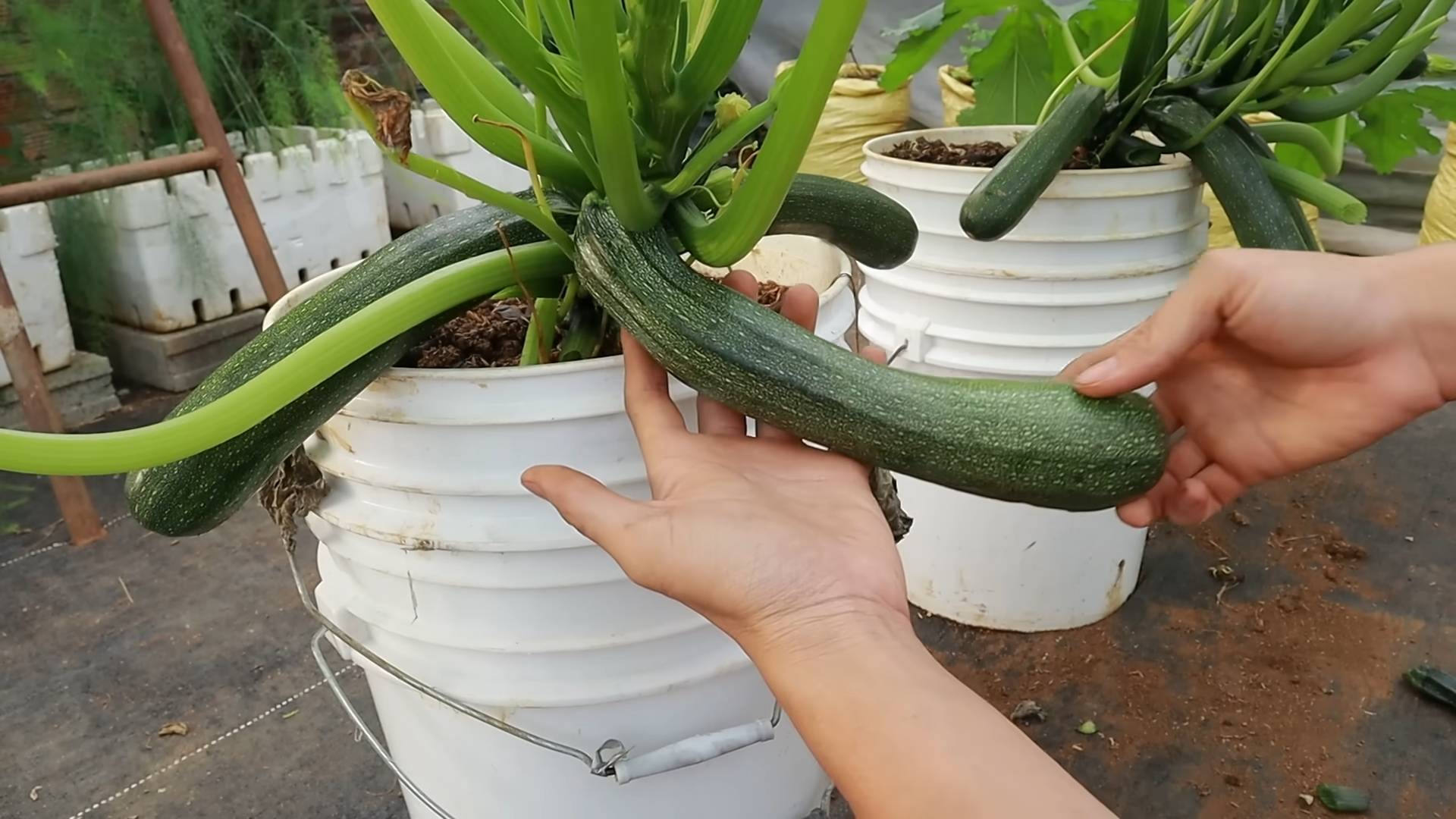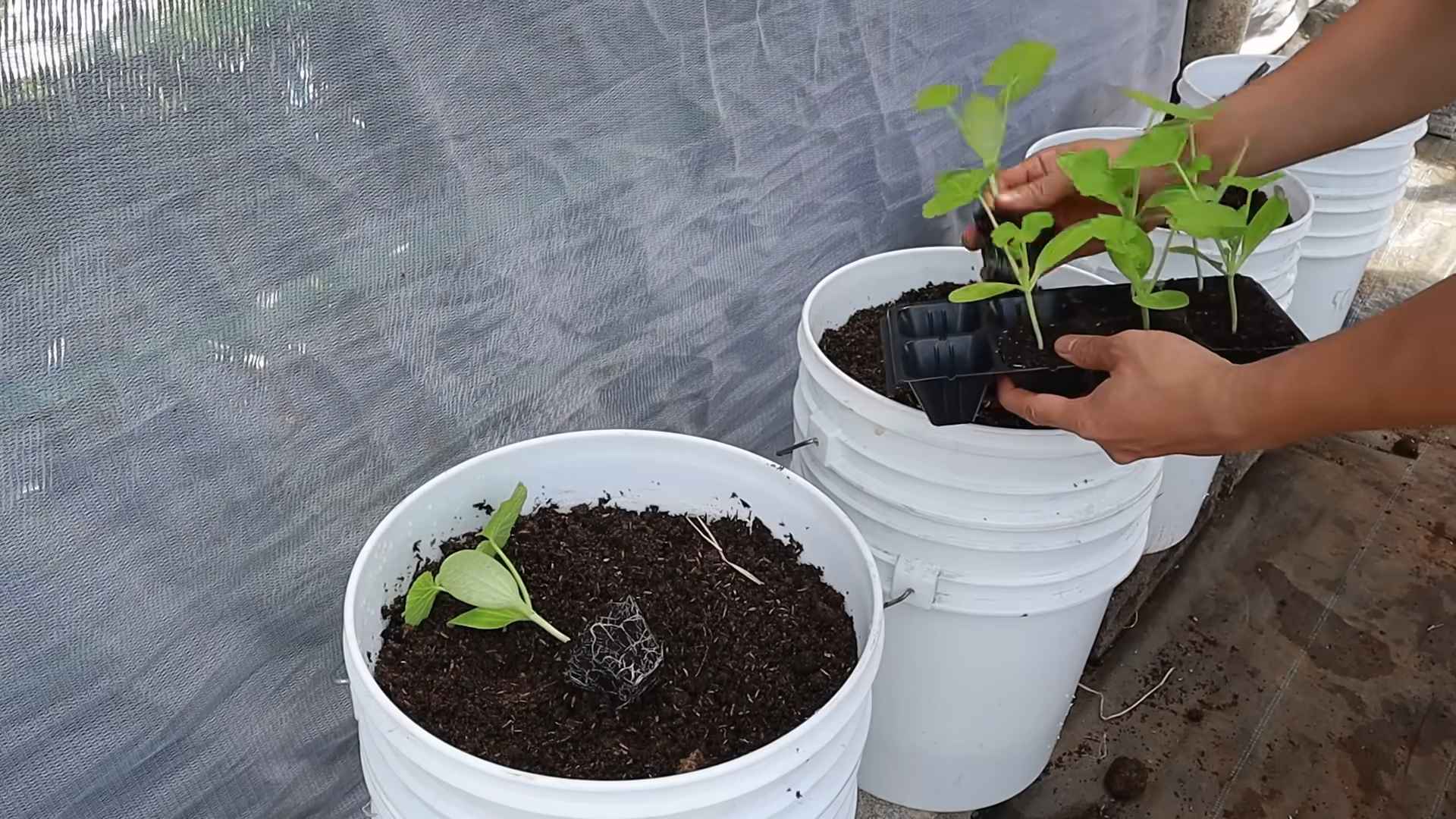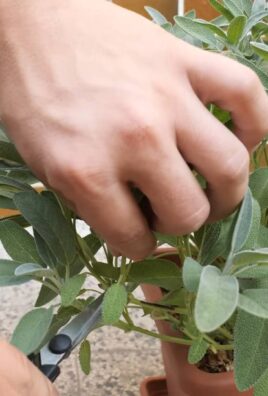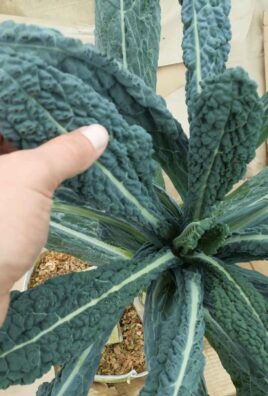Growing zucchini no garden? Absolutely! You might think you need acres of land to enjoy the bounty of fresh, homegrown zucchini, but I’m here to tell you that’s simply not true. For centuries, resourceful gardeners have found innovative ways to cultivate their favorite vegetables, even without traditional garden plots. Think of the ancient hanging gardens of Babylon, a testament to human ingenuity in bringing nature to unexpected places!
Today, that spirit of innovation lives on. Maybe you live in an apartment with a sunny balcony, or perhaps your backyard is all concrete. Whatever the reason, a lack of garden space shouldn’t stop you from indulging in the deliciousness of homegrown zucchini. This DIY guide is packed with simple, effective tricks and hacks that will empower you to successfully grow zucchini, even if you have no garden.
Why is this so important? Because fresh, homegrown zucchini tastes infinitely better than anything you’ll find at the grocery store. Plus, you’ll know exactly what went into growing it – no harmful pesticides or mystery ingredients. So, let’s ditch the garden envy and dive into the world of container gardening and other creative solutions. Get ready to harvest your own delicious zucchini, no garden required!

Growing Zucchini in Containers: A Garden-Free Guide
Hey there, fellow gardening enthusiasts! So, you’re itching to grow some zucchini but don’t have a traditional garden? No problem! I’m here to tell you that you absolutely can cultivate these prolific veggies in containers, even if you’re short on space. I’ve done it myself, and let me tell you, the satisfaction of harvesting your own homegrown zucchini is unbeatable. This guide will walk you through everything you need to know, from choosing the right container to dealing with common zucchini problems. Let’s get started!
Choosing the Right Container and Soil
Before we even think about seeds, we need to get our setup right. This is crucial for zucchini success in containers.
* Container Size: Zucchini plants are surprisingly large and need plenty of room for their roots to spread. I recommend a container that’s at least 24 inches in diameter and 24 inches deep. Anything smaller, and your plant will likely be stunted and produce fewer zucchinis. Think big! A half wine barrel or a large, sturdy plastic container works perfectly.
* Drainage: Excellent drainage is non-negotiable. Zucchini roots hate sitting in soggy soil, which can lead to root rot. Make sure your container has plenty of drainage holes at the bottom. If it doesn’t, drill some!
* Soil: Forget using garden soil straight from the ground. It’s often too heavy and doesn’t drain well in containers. Instead, opt for a high-quality potting mix. I like to use a mix that’s specifically formulated for vegetables. You can also make your own by combining equal parts of:
* Compost: Provides nutrients and improves drainage.
* Peat moss or coco coir: Helps retain moisture.
* Perlite or vermiculite: Improves drainage and aeration.
This blend will give your zucchini plants the perfect environment to thrive.
Planting Your Zucchini Seeds or Seedlings
Now for the fun part – getting those zucchini plants started!
1. Starting from Seed (Recommended): I personally prefer starting zucchini from seed directly in the container. It avoids transplant shock, which can sometimes set back young plants.
* Timing: Zucchini is a warm-weather crop, so wait until all danger of frost has passed before planting. The soil temperature should be at least 60°F (15°C).
* Sowing: Sow 2-3 seeds per container, about 1 inch deep. Space them a few inches apart.
* Watering: Gently water the soil until it’s moist but not soggy.
* Germination: Keep the soil consistently moist, and you should see seedlings emerge in about 7-10 days.
* Thinning: Once the seedlings have a few true leaves (the leaves that appear after the initial seed leaves), thin them out, leaving only the strongest, healthiest seedling in the container. Snip off the weaker seedlings at the soil line rather than pulling them out, as this can disturb the roots of the remaining plant.
2. Starting with Seedlings (If you must): If you’re short on time or prefer to start with seedlings, that’s fine too. Just be extra careful when transplanting.
* Choosing Seedlings: Select healthy-looking seedlings with vibrant green leaves and a sturdy stem. Avoid plants that are root-bound (roots circling tightly around the bottom of the pot).
* Transplanting: Gently remove the seedling from its container, being careful not to damage the roots. Dig a hole in the center of your container that’s large enough to accommodate the root ball. Place the seedling in the hole and backfill with potting mix.
* Watering: Water thoroughly after transplanting.
Caring for Your Zucchini Plants
Once your zucchini plants are established, it’s time to provide them with the care they need to flourish.
1. Watering: Zucchini plants are thirsty! Water deeply whenever the top inch of soil feels dry to the touch. During hot weather, you may need to water daily. Avoid overhead watering, as this can lead to fungal diseases. Instead, water at the base of the plant.
2. Fertilizing: Zucchini plants are heavy feeders, meaning they need a lot of nutrients to produce those delicious fruits.
* Initial Feeding: When you first plant your seeds or seedlings, mix a slow-release fertilizer into the potting mix.
* Ongoing Feeding: Once the plants start producing flowers, begin feeding them every 2-3 weeks with a liquid fertilizer that’s high in phosphorus and potassium. These nutrients are essential for fruit development. I like to use a balanced fertilizer diluted to half strength.
3. Sunlight: Zucchini plants need at least 6-8 hours of sunlight per day. Place your container in a sunny spot where it will receive plenty of direct sunlight. If you live in a particularly hot climate, you may need to provide some afternoon shade to prevent the plants from getting scorched.
4. Pollination: Zucchini plants have separate male and female flowers. The female flowers have a small zucchini fruit at the base, while the male flowers do not. Pollination is necessary for the female flowers to develop into zucchinis.
* Natural Pollination: Bees and other pollinators usually take care of this for you. However, if you’re not seeing many bees in your area, you may need to hand-pollinate.
* Hand-Pollination: To hand-pollinate, use a small paintbrush to collect pollen from the male flower and transfer it to the female flower. Do this in the morning, when the flowers are open.
5. Pruning: While not strictly necessary, pruning can help improve air circulation and prevent fungal diseases. Remove any yellowing or damaged leaves. You can also prune some of the larger leaves to allow more sunlight to reach the developing zucchinis.
Dealing with Pests and Diseases
Even in containers, zucchini plants can be susceptible to pests and diseases. Here’s how to deal with some common problems:
1. Powdery Mildew: This fungal disease appears as a white, powdery coating on the leaves. To prevent powdery mildew, ensure good air circulation around the plants and avoid overhead watering. If you see signs of powdery mildew, treat the plants with a fungicide specifically formulated for vegetables.
2. Squash Bugs: These pests can suck the sap from the leaves and stems, causing the plants to wilt and die. Inspect your plants regularly for squash bugs and their eggs (small, brown clusters on the undersides of leaves). Handpick the bugs and eggs and drop them into a bucket of soapy water. You can also use insecticidal soap to control squash bugs.
3. Squash Vine Borers: These pests bore into the stems of zucchini plants, causing them to wilt and die. To prevent squash vine borers, wrap the base of the stems with aluminum foil or pantyhose. If you see signs of squash vine borers (small holes in the stems with sawdust-like frass), you can try to remove them by slitting the stem open and extracting the larvae.
4. Aphids: These small, sap-sucking insects can cause the leaves to become distorted and yellow. Blast aphids off the plants with a strong stream of water from a hose. You can also use insecticidal soap or neem oil to control aphids.
Harvesting Your Zucchini
The best part of growing zucchini is, of course, harvesting those delicious fruits!
1. Timing: Zucchini grows quickly, so check your plants regularly. Harvest the zucchinis when they are about 6-8 inches long. If you let them get too big, they will become tough and seedy.
2. Harvesting Technique: Use a sharp knife or pruning shears to cut the zucchini from the plant. Cut the stem close to the fruit.
3. Continuous Harvest: The more you harvest, the more zucchinis your plant will produce. So, keep harvesting those zucchinis, and enjoy the bounty!
Choosing the Right Zucchini Variety for Containers
While most zucchini varieties can be grown in containers, some are better suited than others. Bush varieties, which are more compact and less sprawling than vining varieties, are generally a better choice for containers. Here are a few of my favorites:
* Black Beauty: A classic zucchini variety with dark green, almost black skin. It’s a reliable producer and has a mild flavor.
* Spacemiser: As the name suggests, this variety is compact and well-suited for containers. It produces dark green zucchinis with a nutty flavor.
* Eight Ball: A round zucchini variety that’s perfect for stuffing. It’s also relatively compact and easy to grow in containers.
* Golden Zucchini: A beautiful yellow zucchini variety that adds a splash of color to your garden. It has a slightly sweeter flavor than green zucchini.
Tips for Maximizing Your Zucchini Harvest
Here are a few extra tips to help you

Conclusion
So, there you have it! Growing zucchini without a garden isn’t just a possibility; it’s a rewarding and surprisingly simple endeavor. We’ve walked through the steps, from choosing the right container and soil to providing the essential sunlight and water. But why is this DIY trick a must-try? Because it unlocks the joy of fresh, homegrown zucchini for everyone, regardless of their living situation. Imagine the satisfaction of harvesting your own vibrant green squash, knowing you nurtured it from a tiny seed to a bountiful vegetable, all without a traditional garden plot.
This method democratizes gardening, making it accessible to apartment dwellers, balcony enthusiasts, and anyone with limited outdoor space. It’s also a fantastic way to introduce children to the wonders of growing their own food, fostering a connection to nature and healthy eating habits. Plus, let’s be honest, the taste of homegrown zucchini is simply superior to anything you can find in the supermarket. The flavor is fresher, sweeter, and more intense, making it a star ingredient in your favorite summer dishes.
But the fun doesn’t stop there! Feel free to experiment with different zucchini varieties. Consider trying a golden zucchini for a splash of color, or a round zucchini for a unique presentation. You can also companion plant herbs like basil or oregano in the same container to deter pests and enhance the flavor of your zucchini. Another variation is to try different types of containers. While we’ve focused on large pots, you could also explore using grow bags or even repurposed containers like large buckets or tubs. Just ensure they have adequate drainage.
Don’t be afraid to get creative and personalize your zucchini-growing experience. The most important thing is to provide your plants with the basic necessities: plenty of sunlight, consistent watering, and well-draining soil.
We are confident that you can successfully grow zucchini without a garden. It’s a project that’s both achievable and incredibly rewarding. So, grab your seeds, prepare your container, and get ready to embark on a zucchini-growing adventure.
We encourage you to try this DIY trick and share your experience with us! Post photos of your zucchini plants on social media using #ZucchiniNoGarden and tell us about your successes (and any challenges you encounter along the way). We’re eager to see your homegrown zucchini creations and learn from your experiences. Let’s build a community of container gardeners and spread the joy of fresh, homegrown produce! This method of growing zucchini no garden is a game changer for urban gardeners.
Frequently Asked Questions (FAQ)
What is the best type of zucchini to grow in a container?
While most zucchini varieties can be grown in containers, bush varieties are generally better suited for this purpose than vining varieties. Bush varieties tend to be more compact and require less space, making them ideal for smaller containers. Some popular bush zucchini varieties include Black Beauty, Gold Rush, and Eight Ball. However, if you have a larger container and are willing to provide support for the vines, you can also grow vining varieties like Costata Romanesco. Ultimately, the best type of zucchini to grow in a container depends on your personal preferences and the amount of space you have available.
How much sunlight does my container zucchini plant need?
Zucchini plants are sun-loving vegetables and require at least 6-8 hours of direct sunlight per day to thrive. Without sufficient sunlight, your zucchini plants may produce fewer fruits, and the fruits that do develop may be smaller and less flavorful. If you don’t have a spot that receives full sun, try to find the sunniest location possible and supplement with grow lights if necessary. Rotate your container regularly to ensure that all sides of the plant receive adequate sunlight.
How often should I water my container zucchini plant?
Container zucchini plants need consistent watering, especially during hot and dry weather. The frequency of watering will depend on factors such as the size of the container, the type of soil, and the weather conditions. As a general rule, water your zucchini plant whenever the top inch of soil feels dry to the touch. Water deeply, until water drains out of the bottom of the container. Avoid overwatering, as this can lead to root rot. Mulching around the base of the plant can help to retain moisture in the soil.
What type of fertilizer should I use for my container zucchini plant?
Zucchini plants are heavy feeders and benefit from regular fertilization. Use a balanced fertilizer with an NPK ratio of 10-10-10 or 14-14-14. You can also use a fertilizer specifically formulated for vegetables. Apply fertilizer according to the package directions, typically every 2-3 weeks. Avoid over-fertilizing, as this can burn the roots of the plant. You can also supplement with compost tea or other organic fertilizers.
How do I prevent pests and diseases from affecting my container zucchini plant?
Container zucchini plants are susceptible to various pests and diseases, such as squash bugs, squash vine borers, powdery mildew, and blossom end rot. To prevent these problems, inspect your plants regularly for signs of pests or diseases. Remove any infested or diseased leaves or fruits. You can also use organic pest control methods, such as insecticidal soap or neem oil. Ensure good air circulation around the plants to prevent powdery mildew. To prevent blossom end rot, ensure consistent watering and add calcium to the soil.
My zucchini plant is producing flowers, but no fruit. What’s wrong?
There are several reasons why your zucchini plant may be producing flowers but no fruit. One common reason is a lack of pollination. Zucchini plants have separate male and female flowers, and the female flowers need to be pollinated by the male flowers in order to produce fruit. You can hand-pollinate the flowers by transferring pollen from the male flowers to the female flowers using a small brush. Other possible reasons for lack of fruit production include insufficient sunlight, poor soil fertility, or stress from pests or diseases.
How do I know when my zucchini is ready to harvest?
Zucchini is typically ready to harvest when it is about 6-8 inches long. The skin should be smooth and tender, and the fruit should feel firm to the touch. Use a sharp knife or pruning shears to cut the zucchini from the plant, leaving a short stem attached. Harvest zucchini regularly to encourage continued production. Overripe zucchini can become tough and seedy.
Can I grow zucchini in a small container?
While it’s possible to grow zucchini in a smaller container, it’s not ideal. Zucchini plants are vigorous growers and require a significant amount of space for their roots to develop. A smaller container may restrict root growth and lead to stunted plants and reduced fruit production. For best results, use a container that is at least 24 inches in diameter and 24 inches deep.
What kind of soil should I use for growing zucchini in containers?
Use a high-quality potting mix that is well-draining and rich in organic matter. Avoid using garden soil, as it can be too heavy and compact for container gardening. You can also amend the potting mix with compost or other organic materials to improve its fertility and drainage. A slightly acidic to neutral pH is ideal for zucchini plants.
Can I grow zucchini indoors?
While it’s possible to grow zucchini indoors, it can be challenging. Zucchini plants require a lot of sunlight, which can be difficult to provide indoors. You will also need to hand-pollinate the flowers, as there will be no bees or other pollinators indoors. If you do decide to grow zucchini indoors, use a grow light to provide adequate sunlight and ensure good air circulation.





Leave a Comment